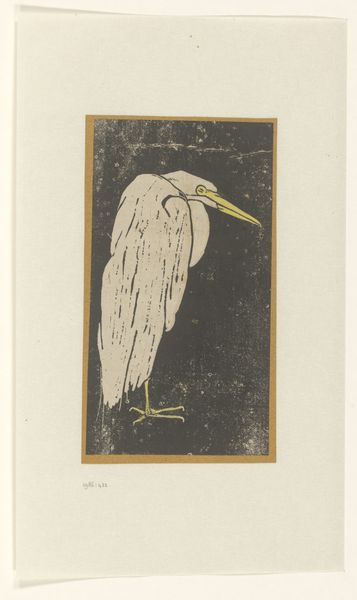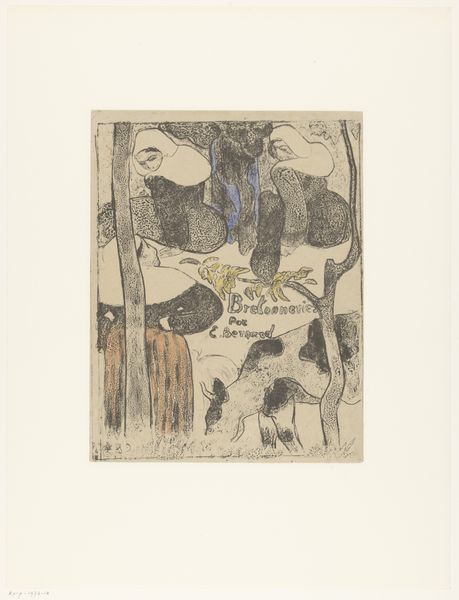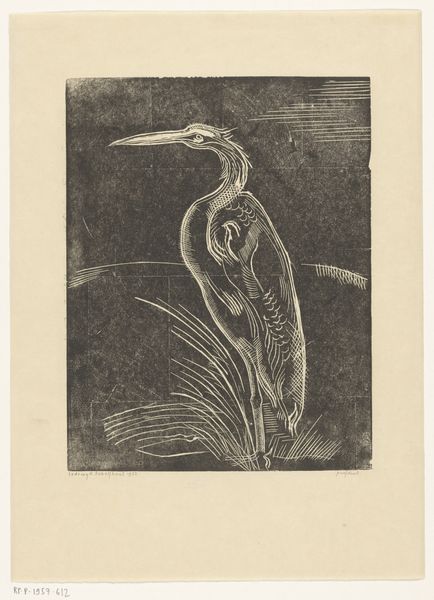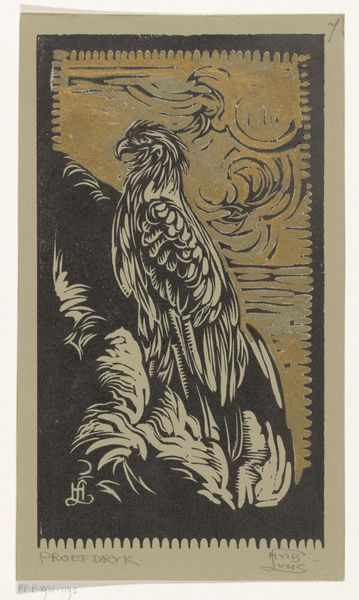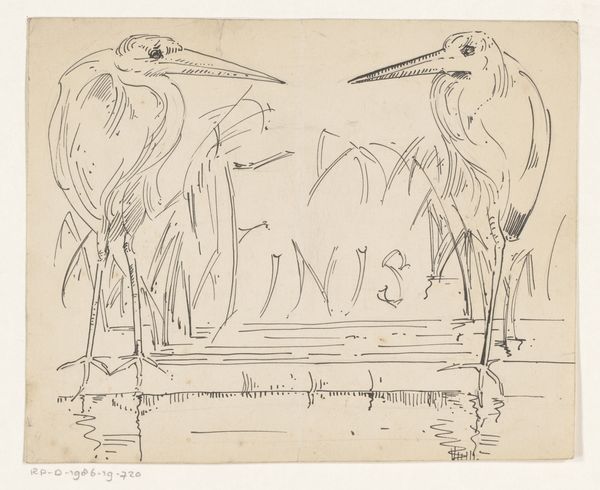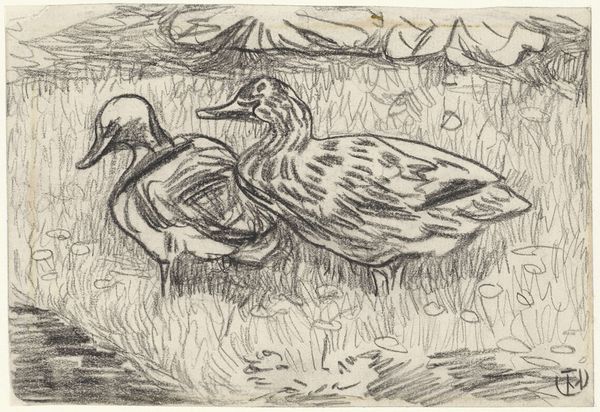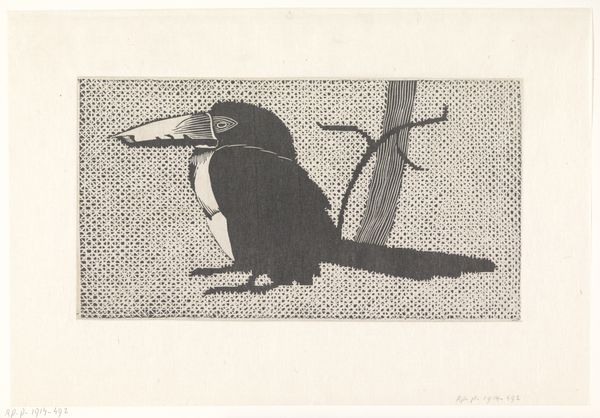
drawing, paper, watercolor, ink
#
drawing
#
blue ink drawing
#
landscape
#
figuration
#
paper
#
watercolor
#
ink
#
watercolour illustration
#
realism
Dimensions: height 213 mm, width 123 mm
Copyright: Rijks Museum: Open Domain
Curator: This blue ink drawing, heightened with watercolor, is called "Drie reigers op een dijk," or "Three Herons on a Dyke," attributed to Reinier Willem Petrus de Vries. It was created sometime between 1884 and 1952. What strikes you most when you first look at it? Editor: The stark simplicity is really arresting. The palette is very limited— blues, grays, a bit of yellow ochre. It creates a somber, almost austere mood. It's compelling. Curator: De Vries, working in the early to mid-20th century, frequently captured these serene landscapes. Notice how the dyke isn't just a physical structure, but almost a symbolic one too. Consider the Dutch landscape at this time, reclaimed and engineered through great human effort and social programs that literally brought a new social order in Dutch rural life. Editor: I am fascinated by the composition itself. The three herons are positioned almost as if they are in dialogue, yet there is a coldness between them. The artist’s application of realism invites us to examine our role within a community, or perhaps even in isolation within an artificial paradise. Are we looking at silent arbiters, perhaps? Curator: Interesting thought! The heron itself is a traditional emblem of vigilance. By positioning them as sentinels upon the dyke, Vries suggests a commentary on guardianship and responsibility. Perhaps an allegory on political affairs? Or is this a personal reflection? Editor: Absolutely! Especially as this piece arises between world wars. Art like this can serve as silent commentary on socio-political structures without needing overtly radical content. In an era of disruption, realism becomes the visual language to both observe and question societal norms. It almost compels one to question these representations through a post-colonial lens and its gaze on both natural and socially constructed realms. Curator: Yes, his deliberate choice of the heron— a wild creature inhabiting a domesticated space—introduces a layer of nuance, doesn’t it? Editor: Definitely. It gives the whole image a critical, subtle edge. It makes you question whether progress and control actually enhance or ultimately stifle our existence and relationship to the land we alter. Curator: That's a refreshing perspective to end with. Editor: It feels apt given its muted tones and introspective arrangement. Thank you for offering your expertise, as always.
Comments
No comments
Be the first to comment and join the conversation on the ultimate creative platform.

